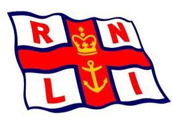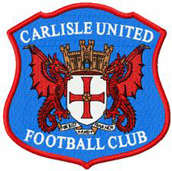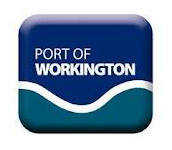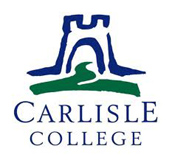- Home
- Scarrows
- Mariners
- Cumberland
- Miscellaneous
The Haytons, Master Mariners of Harrington, Cumberland
The Hayton's of Harrington include in their number seven Master Mariners, three Mates, one Seaman and one apprentice in the Merchant Navy. The master mariners were all in command of sailing vessels between the years 1830 to 1905, with the exception of William Hayton who converted to steamers in the late 1890s. The Haytons have not been as extensively researched as the Scarrows, and in all likelihood, further generations also took to the sea. They first three generations were all bar one born in Harrington, though operated out of numerous other ports including Whitehaven, Workington, Liverpool, and London.
At the top of the family tree is Daniel Hayton (1762-1808). The only evidence to his occupation we have is an entry in the Universal British Directory of 1790, which lists Daniel Hayton as being Master Mariner of Christian, a Dogger, based in Harrington. In the same directory, but all in Workington, are Henry Hayton - Master Mariner of the brig Favourite; Joseph Hayton - Master Mariner of the brig Blessing; and John Hayton - Master Mariner of the brig Rebecca.
All the mariners are depicted in green boxes, the non-mariners in blue and the girls are in pink.
The Scarrow name appears twice in this tree, firstly Jane Scarrow, whose brothers John, Joseph and William form a large part of this website. Secondly, there is Thomas Scarrow Hayton, who rose to the rank of 1st Mate, was qualified as Master, but met his death during a cyclone in North America which sunk his vessel, the Portuense.
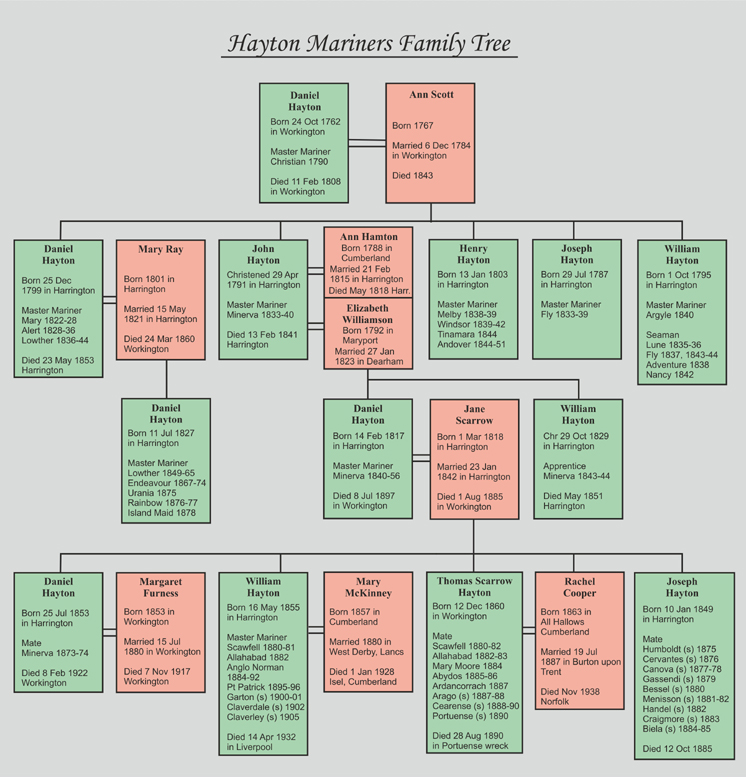
Generation I
This generation of mariners are all sons of Daniel Hayton.
Joseph Hayton, born 1787 #3224

Joseph would probably have gone to sea around 1800 as an apprentice. However, the earliest records we have for Joseph indicate that he was master of the brig Fly between 1833 and 1840, and again briefly in 1844. He does not appear in the Register of Seaman Series II part 2, which was introduced in 1841, which would indicate he had essentially stopped sailing, although we know that wasn't completely correct - examination of the crew lists held at the National Archives shows that whilst Joseph record of continuous service ended in early 1840, he did undertake a series of three voyages between Harrington and Londonderry between February and July 1844 aboard Fly.
The crew lists of 1835 to 1839 give further information on Joseph's voyages in the home trade. His home port was actually Workington rather than Harrington, and his voyages from here were exclusively to Londonderry. He typically undertook about ten return voyages each year.
Examination of shipping movements in the Cumberland Pacquet for 1833-1834 indicate that Joseph Hayton was master of Fly during these years as well.
John Hayton, 1791 to 1841 #3229
John would probably have gone to sea around 1803 as an apprentice. Again, the earliest records we have for John indicate that he was master of the brig Minerva between 1833 and 1839. As with Joseph, he does not appear in the Register of Seaman Series II part 2, which was introduced in 1841. John's son Daniel, served as mate on Minerva in the second half of 1838 with John as Master.
Examination of the crew lists held at the National Archives shows that John's final voyage on Minerva ended in 1 Jan 1840, with his son Daniel taking over as Master the following month.
The crew lists of 1835 to 1839 give further information on John's voyages in the home trade. His home port was mostly Harrington, although he did also depart from Workington to a lesser degree. His voyages from these two ports were to four detinations in Ireland - Balbriggan, Belfast, Drogheda and Dublin. He typically undertook between twelve and fourteen return voyages each year.
Examination of shipping movements in the Cumberland Pacquet for 1833-1834 indicate that John Hayton was master of Minerva during these years as well.
John Hayton was father-in-law to Jane Scarrow, and only spent one year in retirement. He died on the 13th February 1841.

John Hayton died in Harrington on the 13th Feb 1841, at the age of 50.
William Hayton, born 1795 #3216 and #58804
William first went to sea as an apprentice in 1807. We also know that he spent three years serving in the Royal Navy, as well as being in the Foreign Service (Spanish).
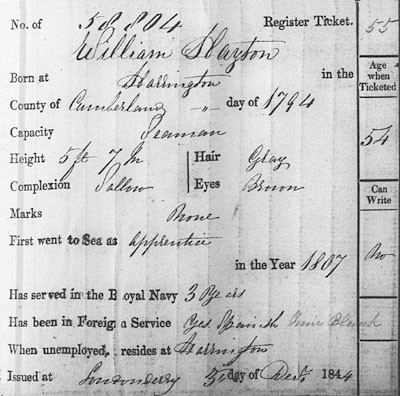 William appears in both parts of the Register of Seaman Series II, as well as the Register of Seaman's Tickets, so we have information on his career between 1835 and 1851. The Register Ticket, shown on the left includes information on height, hair colour and eye colour, as well as a statement as to whether the holder can write, which for William was 'no'.
William appears in both parts of the Register of Seaman Series II, as well as the Register of Seaman's Tickets, so we have information on his career between 1835 and 1851. The Register Ticket, shown on the left includes information on height, hair colour and eye colour, as well as a statement as to whether the holder can write, which for William was 'no'.
All of William's time in the Merchant Service appear to have been in the home trade. The vessels in which he sailed were Lune 1835-36; Fly 1837 with Joseph Hayton as Master; Adventure 1838; Nancy 1842; Fly 1843-44; The vessels in which he sailed in 1845, 1846 and 1851 have yet to be identified. It would appear that William did not sail between 1847 and 1850.
Daniel Hayton, 1799 to 1853 #3218 and #41256
Daniel first went to sea on the 4th Apr 1814 as an apprentice on the brig Hope. He served in this capacity until to 4th Apr 1819. He then served as mate on the brig Fly between 2nd May 1819 to 10th June 1822. It is conceivable that his brother Joseph was already Master of the Fly by this time. Daniel became Master of the brig Mary on the 18th Jun 1822 and remained in command of this vessel until the 10th Feb 1828. Daniel then took command of the brig Alert between the 20th Feb 1828 and Jun 1836, before taking command of his final vessel, Lowther.

All this information comes from Daniel's application for a Master's Certificate of Service (shown above). There are no records relating to Daniel Hayton beyond 1850, by which time he would have been on Lowther for 14 years, with a total time at sea of 36 years. Daniel's son, also Daniel, took command of Lowther at the end of 1849. All of Daniel Hayton's merchant service was undertaken in the home trade.
Daniel Hayton died on the 23rd May 1853, at the age of 54.
Henry Hayton, born 1802 #42425
Henry first went to sea 1817 as an apprentice on the brig Albion, the same vessel that both Joseph and William Scarrow were to sail on in the 1850s. The final two years of his apprenticeship were then transferred to the barque Quebec Packet. On this vessel he also spent two years as a seaman and four years as Mate. He then served as mate for two years on each of the vessels Union and Neston.
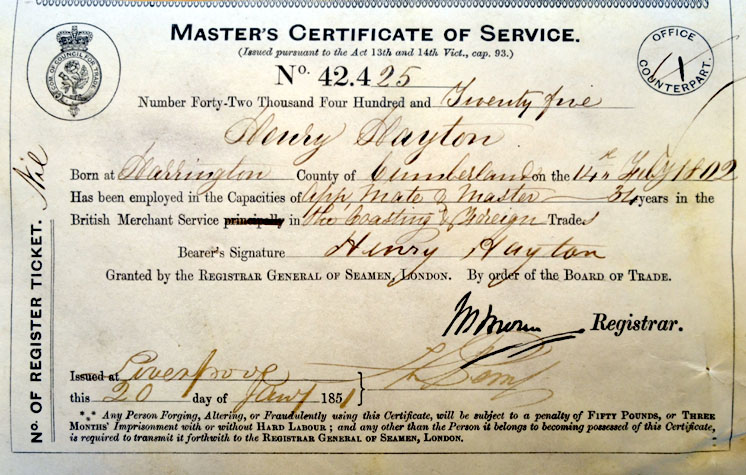
Henry became Master of the vessel Melby in 1839. This, and all the vessels he subsequently sailed were registered in Liverpool, and it is here that Henry resided. In sequence he commanded the vessels Windsor (1839-42), Tinamara (1844) and Andover (1844-51). William Scarrow sailed with him on Andover in 1850. There are no records relating to Henry Hayton beyond 1851, by which time he would have been a Master for 12 years, with a total time at sea of 34 years. Unlike his brothers Joseph, John, William and Daniel, most of Henry Hayton's merchant service was undertaken in the foreign trade. In total he spent 26 years in the foreign trade, sailing to the Americas, West Indies and Brazils. The remaining eight years were in the coasting and coal trade.
Strangely, the entry for Henry Hayton in the Register of Seaman Series II gives his place of birth as Liverpool. His birthplace is similarly shown as Liverpool in the Register of Masters but is correctly shown as Harrington on his application for a Master's Certificate of Service in 1850. The information in this application corroborates with the voyage records given in the registers so they without doubt relate to the same mariner.
Generation II
The second generation of Hayton mariners comprises the two cousins, Daniel and Daniel, and the older Daniel's half brother William.
Daniel Hayton 1817 to 1897 #4146 and #41314
Daniel first went to sea on the 5th May 1832 as an apprentice on the vessel Sally, the same vessel that William Scarrow was to sail on a decade later. Daniel served as a seaman on Sally after his five year apprenticeship had ended. He sailed briefly on Amphion, before joining his father, John, on Minerva. Daniel, served as mate on Minerva between 1839 and 1840 with his father, John, as Master. Daniel then became Master of Minerva 2nd February 1840, and sailed in this capacity until June 1856. In 1842, he married Jane Scarrow, whose brothers Joseph and William were also mariners.
 All voyages that were undertaken by Daniel between 1839 and 1856 were in the home trade. In July 1856, Daniel retired from sailing and passed Minerva to his brother-in-law, William Scarrow, who commanded her for two years. In 1861 he was working as a coal agent, and by 1881 he was registered as a ship owner. Daniel and Jane had eight children, or which four of them (Joseph, Daniel, William and Thomas Scarrow) also served in the Merchant Navy.
All voyages that were undertaken by Daniel between 1839 and 1856 were in the home trade. In July 1856, Daniel retired from sailing and passed Minerva to his brother-in-law, William Scarrow, who commanded her for two years. In 1861 he was working as a coal agent, and by 1881 he was registered as a ship owner. Daniel and Jane had eight children, or which four of them (Joseph, Daniel, William and Thomas Scarrow) also served in the Merchant Navy.
Daniel Hayton, born 1827 #272831 and #75116
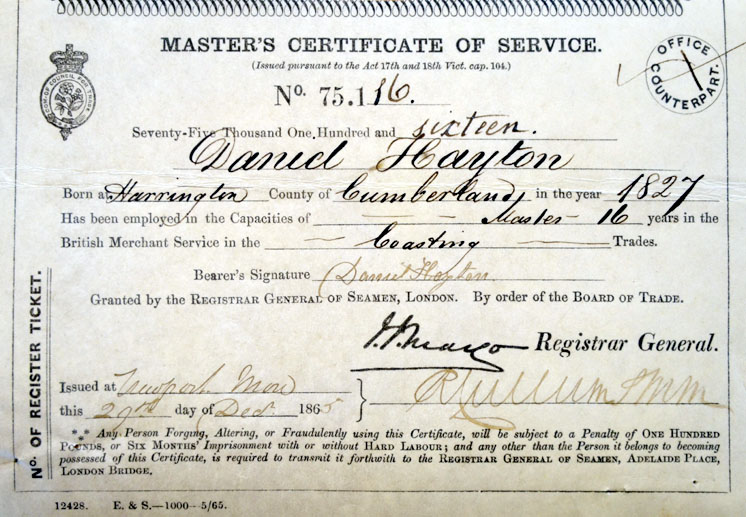
Daniel first went to sea on the 27 Jun 1843 as an apprentice on the vessel William Peile, with all five years spent in the foreign trade. Daniel then served as a seaman on Ituna and Wilton, for a year each, before assuming command of Lowther from his father Daniel at the end of 1849. Daniel, served as Master on Lowther continuously until 1865. Daniel then served as Master of the vessels Endeavour (1867-74), Urania (1875), Rainbow (1876-77) and Island Maid (1878). His voyage on Island Maid is the last recorded.
William Hayton born 1829
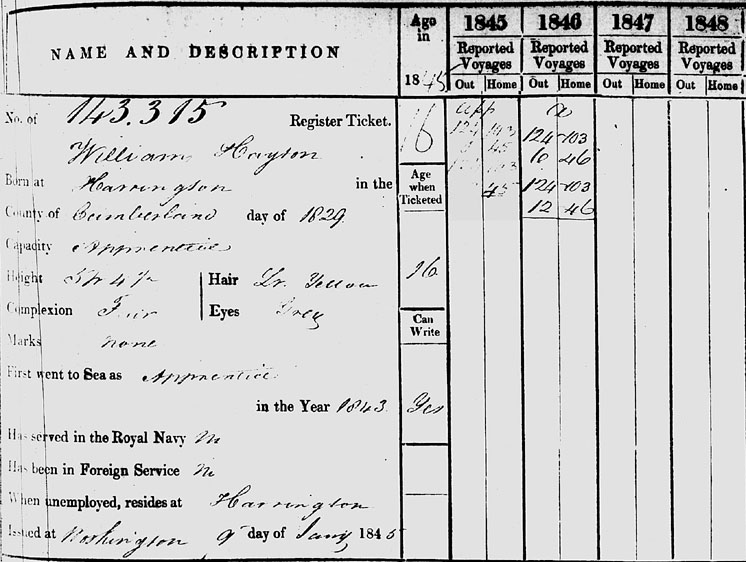
William was initially discovered by viewing Minerva crew-lists, and then his entry in BT113 was subsequently found, although it was discovered in a round about way. He is a half-brother of Daniel (son of John 1791-1841). He sailed as an apprentice on Minerva with Daniel as Master between 1843 and 1846. Examination of crew lists beyond 1846 should show whether he continued his career beyond his apprenticeship which ended 1846. Interestingly, in the 1851 census, William lists his occupation as mariner.
Generation III
The third generation of mariners are all sons of Daniel Hayton and Jane Scarrow. They all started their careers on sailing vessels, but all (with the possible exception of Daniel due to lack of information) converted to steamers at some point in their career.
Joseph Hayton 1849 to 1885 #32520
Joseph first went to sea as a boy, on the sailing vessel Colchayua, on the 10 Oct 1866. On the 4 Jul 1867 he joined the vessel Toftcombes as an ordinary seaman. He then sailed in a succession of vessels before converting to steamers at the end of 1872. Joseph served as a seaman on the steamer Gassendi in 1873 and 1874, gaining his second mate's certificate in February 1874. He then worked on a succession of steamers, rising through the ranks from 3rd mate to 1st Mate. He obtained his First Mate's certificate in 1880 and his Master's certificate in 1882.
Joseph's final voyage was on the steamer Biela in July 1885 to South America. Joseph died on 12 Oct 1885 at the age of 36. He had served in the Merchant Navy for 19 years. Below is an extract from the Captain's Register for Joseph Hayton.

Daniel Hayton 1853 to 1922 #20071
The information we have on Daniel Hayton is somewhat sparse. He started as an apprentice on the vessel Carricks on the 10 Feb 1869 and sailed in her until May 1873. Daniel doesn't appear in either the Captain's Register or the Register of Certificates of Competency, Masters and Mates, Foreign.
In the 1881 census, Daniel was working as a mariner, but by 1891 he was employed as a shipping agent.
William Hayton 1855 to 1932 #17943
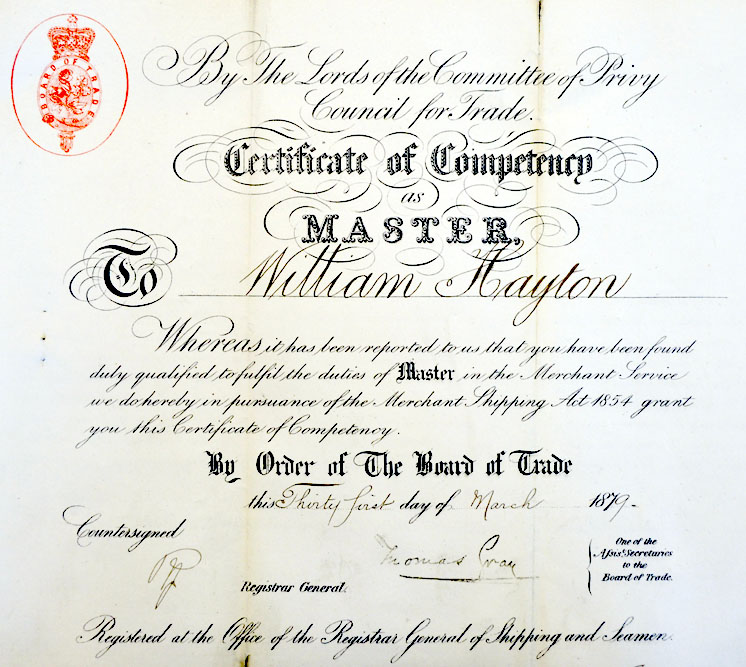
William's sea-faring career started as an apprentice on Blenheim on the 12th Jan 1869. His apprenticeship lasted four years, after which he was employed as a second mate on the vessels Embleton, Bellhill and Routenbeck. On 29th Nov 1876, he was promoted to 1st Mate on Routenbeck, a position he held for just over two years. He was briefly employed as 1st Mate on Castlehead, before taking command of the vessel Scawfell on the 24th Sep 1880. William remained master of Scawfell until the middle of 1882 when he transferred to the Allahabad.
On 15 Mar 1884, William started a long association with the vessel Anglo Norman, sailing with her until 1892 on various foreign trade routes including Brazil, West Indies, East Indies and the Pacific. He then transferred to the vessel Port Patrick for 1895 and 1896, before inevitably converting to steamers, taking command of Garton on the 24th Mar 1899. William commanded a succession of steamers until his final voyage on Claverly to the East Indies on the 17th Oct 1905. William completed 36 years at sea, retiring at the age of 50, and living in retirement another 27 years until his death at the age of 77.
Although born in Harrington, William lived most of his life in and around Liverpool. In 1879, when he achieved his Master's Certificate, he was living in 94 Shaw Street, Liverpool.
Thomas Scarrow Hayton 1860 to 1890 #08326
Thomas first went to sea as an apprentice, on the vessel Corolla, on the 12th Oct 1875. At the end of his apprenticeship, in Oct 1879, Thomas continued on the Corolla as seaman and then as second mate. In 1880, he joined his elder brother William Hayton (Master) on Scawfell, and then followed him to the Allahabad in 1882, serving for a further two years as second mate. At the end of 1882, Thomas had achieved his 1st Mate's qualification, and served in this capacity on the vessel Mary Moore until 1885. At the end of 1885, Thomas had a Master's qualification, but was never to serve in this capacity. Thomas then had spells as 1st mate and 2nd mate on the vessels Abydos and Ardancorrach, before converting to steamers. Thomas's first voyage on a steamer was as second mate on Arago in 1887. He then transferred to Cearense in 1888, and finally the ill-fated Portuense in 1890, where he served as 1st Mate.
The table below gives an account of the last voyage of the steamer Portuense, in which Thomas Scarrow Hayton (1st Mate) lost his life.
| Liverpool 28 May 1890 | Portuense departed Liverpool on this day, and docked in Penarth/Cardiff on the 29th May. |
| Hamburg 4 Jun 1890 | Portuense called at Hamburg on 4th June, Cuxhaven on the 7th and Dover on the 9th. |
| Lisbon 18 Jun 1890 | Portuense docked at Lisbon on the 18th June, and left on the 26th. |
| Maceio 18 Jul 1890 | Portuense called in at Maceio on the 18th July 1890, and then Para on the 6th August. |
| New York 9 Aug 1890 | Portuense called in at New York on the 9th August 1890, and then Baltimore on the 23th August. |
| Baltimore 2 Sep 1890 | The cargo shipped at this port for Para was valued at $20,297 and is as follows: 500 gallons Petroleum, 5058 lbs lard, 2341 gallons of machine oil, 2810 bbls flour, 50 bbls. Bacon, 10 bales oakum and 630 gallons animal oil. |
| St. Thomas 9 Sep 1890 | The steamer Portuense, Hews, from Baltimore for Para and Maceio, foundered at 9am on Aug 28th during a hurricane, about 250 miles north-east of Anegada. The hurricane had commenced on the 27th. |
| St. Thomas (by cable) | The Portuense, from Baltimore for Para, foundered near Anegada; 19 of crew saved; remainder missing. The crew missing are the captain, first officer, third officer, chief engineer, two stewards, boatswain, carpenter, fireman (Keer), seaman (Wilson). |
| Plymouth 25 Sep 1890 | Tagus (s), which arrived today, brought the survivors of the crew of the steamer Portuense, of Liverpool, from Baltimore for Para, which foundered at sea. On Aug 29th, when off Anegada Island, a rock of the Virgin Island Group, she was struck by a cyclone. A mountainous sea was running, and the hatches were stove in by the weight of the water thrown on deck. Seeing no hope of saving the ship, the captain resolved to take to the boats. Nineteen of the crew, including Mr. J.M. Potts, the second engineer, successfully embarked; but hardly had they done so, when the rope, fastening the ship’s boat to the vessel’s side, parted; and before the captain and the remainder of the crew, 10 men all told, could be rescued, the vessel foundered with them on board. The survivors, who were four days in the sea in an open boat, ultimately made the Island of Tortola, and reached St. Thomas, whence they were sent to Barbados. Seventeen of the men embarked there in the Tagus for England. The shipwrecked men were forwarded from here to Liverpool by the Shipwrecked Mariners’ Society. |
Altogether, ten mariners drowned when the Portuense was wrecked, including most of the officers: Fred Hews (Master), Thomas Scarrow Hayton (1st Mate), Carl Bjerkness (3rd Mate), William Darry (Carpenter), William Simpson (Boatswain), Edward Evans (Chief Engineer), Henry Dix (Chief Steward), Frank Dale (Assistant Steward), Edward Kerr (Fireman) and R. Wilson (Seaman).
The full crew list of the last voyage of Portuense can be seen here. A new window will open.

